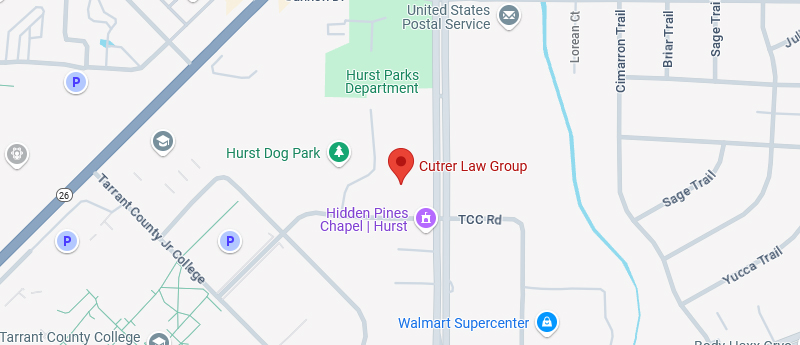Retirement Accounts: A Frequently Overlooked Asset
When former partners are going through a divorce, they often realize things are more complicated than they seem. Even traditional property division can be complex — particularly when assets other than money and property are involved. This is why you should understand the most effective ways to handle retirement accounts during a divorce.
Unfortunately, many people don’t realize that these accounts might be eligible for division. Even if a person starts their retirement account decades before getting married, their soon-to-be-former spouse could be entitled to a portion of it. This means proactive estate planning on one person’s part can highly benefit their former partner.
Fortunately, there are ways to simplify this process and handle retirement accounts during divorce in a more straightforward manner.
Identify Your Plans and Their Value
As with all matters related to property division in divorce, handling retirement accounts starts with an in-depth inventory of assets. Each party should make a comprehensive list of all their retirement accounts. This should include 401(k) accounts, IRAs, pensions, and other retirement plans. It’s also necessary to determine the current value of each account.
To determine value, start by collecting statements, valuations, or actuarial assessments for any defined benefit plans. While the full value of your accounts may not be considered part of the marital estate, it’s still important to identify what they’re worth. Other issues related to how much is eligible for division can be calculated later.
The Legal Issues Involved
Unfortunately, there is no one-size-fits-all approach to divorce. Even if everyone’s situation was exactly the same, varying state laws would create differences in how retirement accounts are handled during a divorce. It basically comes down to whether you live in a community property or an equitable distribution state.
In community property states — such as Texas and California — any assets accrued during a marriage are considered equally owned by both partners. Division is typically down the middle. This includes retirement accounts. In equitable distribution states — such as Florida and New York — property is divided in a “fair and just” manner. This might not always be equal.
In community property states, any contributions and earnings made during the marriage are subject to equal division. Ensuring an equal split can involve offsetting other assets, transferring accounts, and cash payouts. In some instances (e.g., 401(k), pensions), a qualified domestic relations order (QDRO) is required so the plan administrator can pay the other spouse.
Consider Different Types of Retirement Accounts
It’s a simple fact that there are major differences between varying retirement plans. Understanding these differences is important when identifying how to best handle retirement accounts during a divorce. For instance, a certain type of plan might be easier to transfer value out of — so it may be advisable to give more of this account to a spouse rather than trying to divide other plans.
For example, a defined contribution plan (e.g., 401(k) accounts) is typically easier to divide. Using a QDRO, it’s simple to split the plan’s value exactly as the divorce decree dictates. However, defined benefit plans (i.e., pensions) require a bit more work. An actuarial valuation may be necessary to determine the present value of future benefits.
In these instances, division can be complicated and may require shared payments or asset offset. Of course, it’s also possible that you have an individual retirement account (IRA). If this is the case, a transfer can be much simpler than dividing a pension. In fact, the process is much more straightforward than any employer-sponsored account.
Don’t Forget Tax Implications
When a person has a retirement account, there are certain rules regarding the funds within it. One of the most well-known is that there are tax implications for early withdrawals. Considering this fact, it’s not uncommon for people to worry about what might happen if their plans have to be divided between themselves and their former spouse.
While these are very real concerns, there are typically strategies for avoiding potential tax problems. For instance, using a QDRO for qualified plans can allow assets to pass to a former spouse without incurring taxes. The same is true when using a transfer incident to divorce when dividing IRAs.
You can also greatly reduce the risk of early withdrawal penalties by simply complying with IRS regulations and making sure the transfers are clearly outlined in the divorce settlement. Due to the complexity of these issues, hiring a lawyer is advisable. Handling retirement accounts during divorce is already complicated enough without mistakes that can lead to tax liability.
Ensuring a Smooth Process During and After Division
If two former partners can work together during a divorce, it’s possible to avoid the most complicated issues that arise. Sit down with your spouse and negotiate a fair division. Remember, it will often make sense to offset retirement assets with other assets. For instance, you may agree to give up your entire 401(k) in order to put the house in only your name.
When negotiating, you should also consider the tax implications you both might face. Even if your split is amicable, figuring out these issues can prove difficult. Unfortunately, everything gets far more challenging when the parties cannot work together. While it’s always advisable to have a divorce attorney, it’s absolutely critical when agreements can’t be reached.
However, there will come a time when all this is behind you. When this happens, make sure you prepare for the future by updating your beneficiary designations and adjusting your retirement plan. At Cutrer Law Group, we can assist with your divorce and estate planning needs. Contact us at 817-854-1651 to schedule your strategy session today.





 1845 Precinct Line Road
1845 Precinct Line Road info@akcfamilylaw.com
info@akcfamilylaw.com 817-854-1651
817-854-1651



